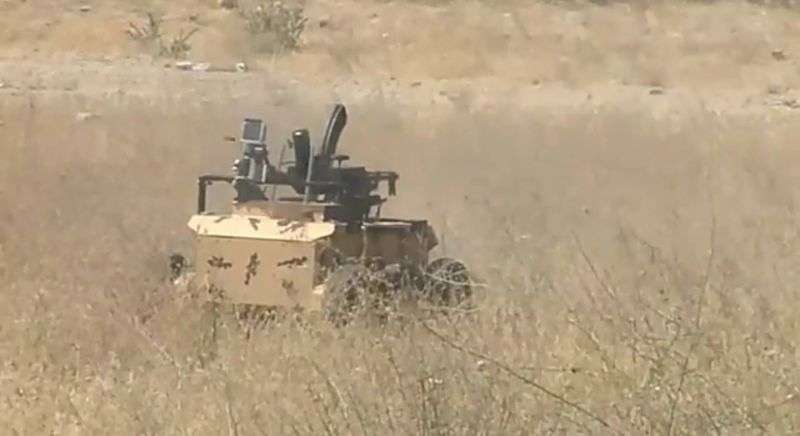
Iran shows off new killer wheeled robots designed to take on tanks, infantry

The Islamic Republic of Iran Army Ground Forces (NEZAJA) recently revealed the Heidar-1 project, a group of small, networked robotic ground vehicles developed by the Research and Self-Sufficiency Jihad Organization of the Iranian Army. The proclaimed “network-connected anti-infantry and armor smart UGVs” (unmanned ground vehicles) prototypes were on display at an Army weapons expo in Tehran.
The six-wheeled boxy bots, according to images and videos released by NEZAJA, come in six versions—including two that carry assault rifles mounted to their tops and one that is essentially a mobile anti-tank mine. The vehicles are topped with pairs of ruggedized antennae and small cameras; the assault-rifle equipped versions also appear to have a telescopic optic sensor for weapons aiming.
Project Heidar-1
Network-connected anti-infantry and armor smart UGVs pic.twitter.com/EvFfxh3Ehg— Iran Military (@Iran_Military) October 4, 2019
In the video released in the Twitter post above, the UGVs fire their guns, and one rolls toward a tank-like target before exploding.
-
Collect all six!
-
A prototype anti-tank bot rolls under a target…
-
…and explodes.
The use of remote-controlled uncrewed ground vehicles is not uncommon in the Middle East—ISIS and other non-state organizations have built their own from commercially available parts. And the concept of remote-controlled moving weapons dates back to World War I with the French Army’s use of radio-controlled “land torpedoes”; the Germans would use the cable-tethered Goliath tracked mine against tanks in World War II.
But as Samuel Bendett, an adviser at the Center for Naval Analyses, told C4ISRNet’s Kelsey Atherton, this is the first time that Iran has publicly displayed armed UGVs.” Equally interesting is their claim that this will be a ‘networked’ system of vehicles that can presumably function in more or less autonomous mode,” Bendett added. But the prototypes displayed are still essentially remote-controlled vehicles.




